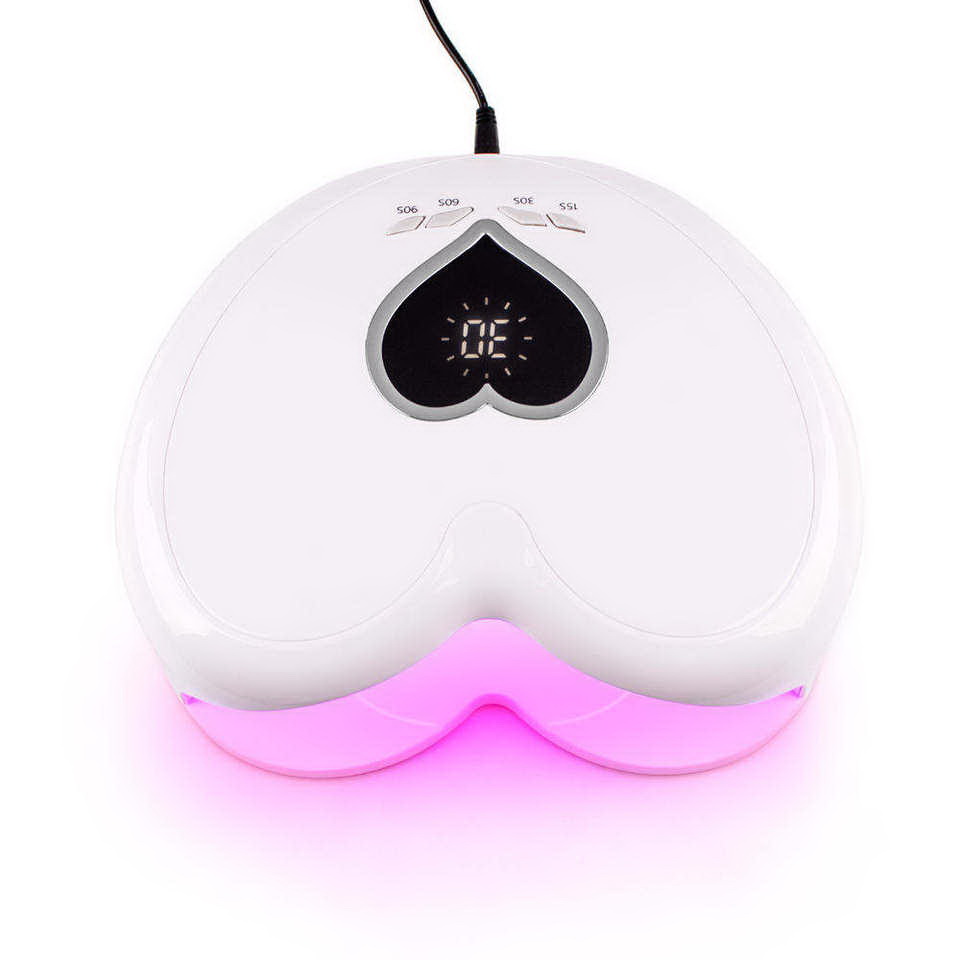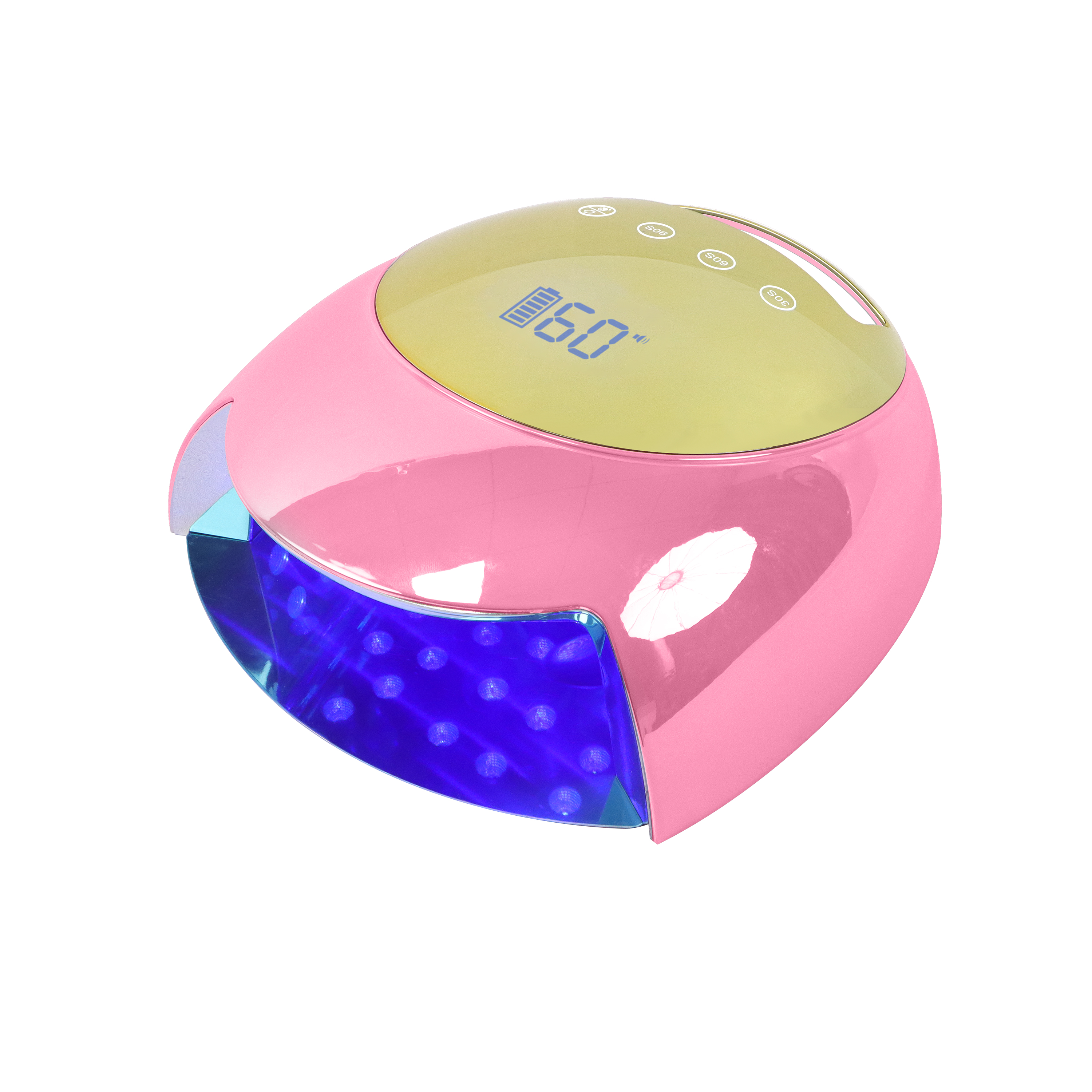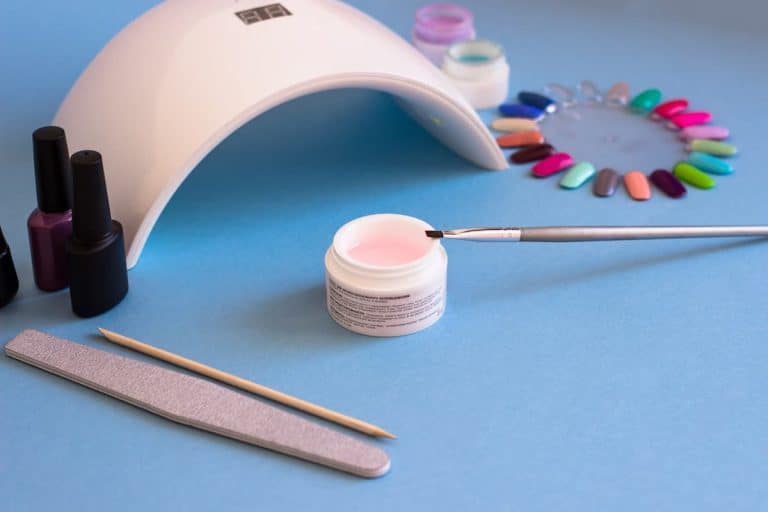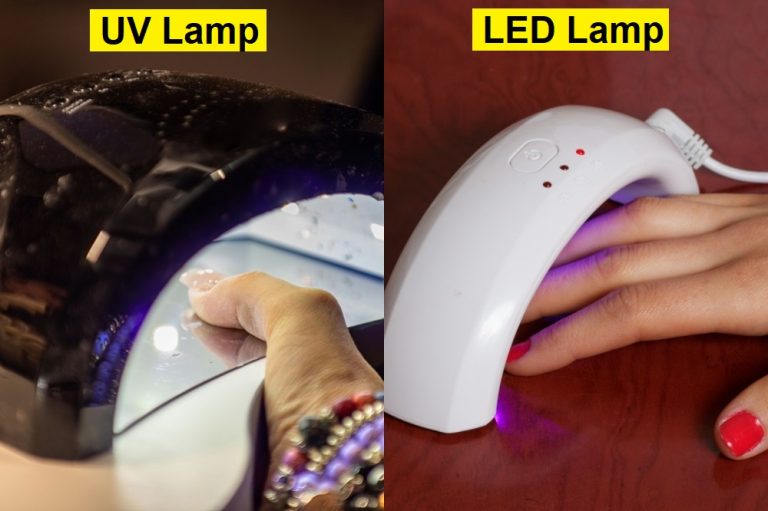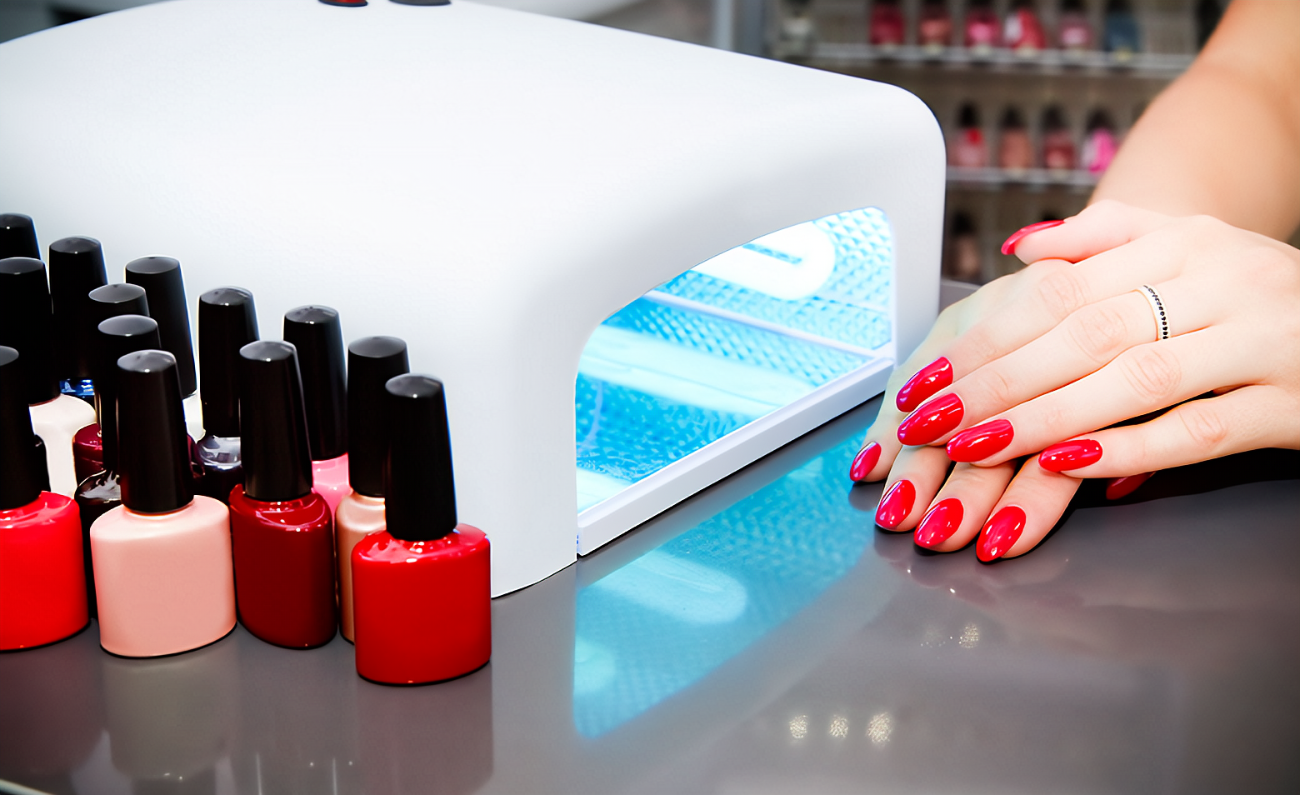In the ever-evolving world of beauty and self-care, concerns often arise surrounding new techniques and technologies. One such topic that has captured attention is the potential link between gel nail lamps and cancer. As a prominent manufacturer in the nail equipment industry with over a decade of experience, we understand the importance of addressing these concerns with factual information. In this article, we will delve into the core question: Do gel nail lamps really cause cancer? Let’s explore the science, research findings, and expert insights that shed light on this matter, ensuring that you have a well-rounded understanding of the situation before making any decisions about your nail care routine.
The Science Behind Gel Nail Lamps
Gel nail lamps operate on a principle rooted in photo-initiated polymerization. This process involves the use of UV light to trigger a reaction that transforms liquid gel into a solid, durable coating on the nails. Here’s how the process unfolds:
| Step | Process Description |
|---|---|
| 1 | A gel polish containing oligomers and monomers is applied to the nails. |
| 2 | The nails are exposed to the UV light emitted by the gel nail lamp. |
| 3 | The UV light activates photoinitiators within the gel polish. |
| 4 | The photoinitiators trigger a chain reaction that causes the oligomers and monomers to cross-link, forming a solid gel coating. |
| 5 | The resulting gel layer provides enhanced durability and a glossy finish. |
The controlled emission of UV light from the lamp serves as a catalyst in this intricate process, ensuring a swift and efficient curing process. By comprehending the underlying chemistry, users can better appreciate how gel nail lamps effectively transform liquid gel into stunning, long-lasting manicures. As technology advances, the industry continues to refine these lamps, focusing on optimizing the curing process while addressing potential concerns about UV exposure and health implications.
UV Exposure and Health Concerns
The utilization of UV light in gel nail lamps raises legitimate questions about its impact on human health. UV radiation, which lies beyond the visible light spectrum, possesses both beneficial and potentially harmful properties. The concerns stem from the potential for prolonged or intense exposure to UV light during gel manicures. Let’s delve into the dual nature of UV exposure and its health implications:
Short-Term Exposure:
Brief exposure to UV light during a gel manicure session is typically considered safe for most individuals. The dosage of UV radiation emitted by reputable gel nail lamps is regulated to minimize the risk of skin damage. Nail technicians and customers alike often adopt safety precautions, such as applying sunscreen to the hands or using fingerless gloves during the procedure.
Long-Term Exposure:
While short-term exposure may be manageable, repeated and extended exposure to UV light—over months and years—raises potential health concerns. Prolonged UV exposure can contribute to skin aging, such as the development of wrinkles, age spots, and loss of skin elasticity. Moreover, there is a broader debate within the scientific community about whether frequent UV exposure, including that from gel nail lamps, might increase the risk of skin cancer over time.
It is crucial to emphasize that the UV radiation emitted by gel nail lamps is significantly lower than that of tanning beds, which are known for their higher intensity UV radiation. Understanding the nuances of UV exposure, its varying effects, and the significance of responsible use can help individuals make informed decisions about their nail care routines.
Research Findings on Cancer Risk
Numerous scientific studies have been conducted to assess the potential association between gel nail lamps and cancer risk. These investigations have primarily focused on the UV exposure levels during gel manicures and whether they pose a substantial risk to human health. Below is a summary of key research findings and their implications:
| Study | Key Findings |
|---|---|
| Study A | UV exposure during gel manicures is significantly lower than tanning bed UV exposure, reducing the risk of skin damage. |
| Study B | The risk of developing skin cancer due to gel nail lamp usage is considered minimal when appropriate safety measures are observed. |
| Study C | Regular, infrequent use of gel nail lamps is unlikely to result in significant UV-related health risks. |
These studies collectively suggest that while UV exposure is an inherent aspect of gel nail lamp usage, the associated risks can be managed effectively. Adhering to recommended safety measures, such as using broad-spectrum sunscreen or protective gloves, further mitigates any potential adverse effects. However, it’s essential to recognize that the scientific community continues to explore this topic, and individuals are encouraged to stay informed about new findings and guidelines.
By evaluating these research outcomes, users can make informed decisions about incorporating gel nail lamps into their beauty routines while maintaining awareness of their overall health and safety.
Comparing UV Exposure Levels
Understanding UV exposure in the context of daily life and comparing it to the exposure incurred during gel nail lamp usage provides valuable insight into potential risks. Here’s a comparison of UV radiation levels between common scenarios and gel nail lamp sessions:
| Exposure Source | UV Radiation Level (Approximate) |
|---|---|
| Natural sunlight (midday) | 1 minute = 3-4 minutes under gel nail lamp |
| Tanning bed (10-minute session) | 20-30 gel nail lamp sessions |
It’s evident from this comparison that the UV exposure from gel nail lamps is notably lower than that experienced during tanning bed sessions or prolonged periods under natural sunlight. Moreover, nail technicians and users are often exposed to gel lamps for a much shorter duration than the equivalent time spent outdoors. Responsible usage, coupled with protective measures, helps minimize the potential health risks associated with UV exposure from gel nail lamps.
By putting the exposure levels into perspective, individuals can make informed decisions about incorporating gel nail lamps into their beauty routines while keeping potential risks in check.
Safety Measures and Guidelines
Ensuring safe usage of gel nail lamps is paramount to minimizing potential health concerns associated with UV exposure. Here are essential safety measures and guidelines to follow when using gel nail lamps:
1. Protective Gear:
It’s advisable to wear fingerless UV protection gloves during gel manicures. These gloves shield the hands from direct UV exposure while allowing nail technicians to work with precision.
2. Broad-Spectrum Sunscreen:
Apply a broad-spectrum sunscreen with a high SPF to the hands before the gel manicure session. This additional layer of protection helps reduce UV penetration.
3. Controlled Exposure Time:
Limit the duration of exposure to UV light by adhering to recommended curing times provided by gel nail lamp manufacturers. Avoid prolonged or unnecessary exposure.
4. Quality Lamps:
Invest in reputable gel nail lamps that comply with safety standards. These lamps are designed to emit controlled levels of UV radiation, reducing the risk of skin damage.
5. Frequent Breaks:
If you frequently use gel nail lamps, consider taking breaks between sessions to allow the skin to recover from any minimal UV exposure.
6. Monitor Skin Health:
Regularly monitor the skin on your hands for any unusual changes. Consult a dermatologist if you notice any signs of skin damage or irritation.
By integrating these safety measures into gel nail lamp usage, individuals can confidently enjoy beautiful, long-lasting manicures while safeguarding their skin health. Responsible practices ensure that the benefits of gel nail treatments outweigh any potential risks.
Expert Opinions on Cancer Risk
Gathering insights from experts in the field provides a well-rounded perspective on the potential relationship between gel nail lamps and cancer risk. Prominent dermatologists and researchers have weighed in on this matter, shedding light on the scientific basis behind these concerns:
Dr. Jane Turner, Dermatologist:
“Research indicates that the UV exposure from gel nail lamps is considerably lower than that of tanning beds. While caution is necessary, brief and infrequent gel manicure sessions are unlikely to pose a significant risk of skin cancer. It’s crucial for consumers to follow safety guidelines and utilize protective measures.”
Dr. Mark Rodriguez, Research Scientist:
“Our studies emphasize the importance of responsible gel nail lamp usage. UV exposure, even in controlled amounts, can contribute to cumulative skin damage over time. Regular users should be vigilant about UV protection and consider incorporating breaks between sessions to mitigate potential risks.”
Dr. Emily Williams, Clinical Dermatology Advisor:
“Comparative data shows that typical outdoor UV exposure during a short walk may exceed the UV radiation from a gel nail lamp session. It’s about maintaining a balance between enjoying nail aesthetics and safeguarding skin health. Consulting a dermatologist for personalized advice is encouraged.”
These expert opinions collectively underline the significance of informed and cautious usage of gel nail lamps. The consensus among professionals is that, when used responsibly and in accordance with safety guidelines, gel nail manicures can be enjoyed with minimal health risks. As with any beauty procedure, informed decision-making based on accurate information is paramount.
Conclusion: Navigating Nail Care Choices
In a world where beauty and health intersect, informed decisions are essential. The discourse surrounding gel nail lamps and their potential cancer risk highlights the importance of understanding the science, evaluating research findings, and seeking expert insights. As this article has elucidated, the concerns about gel nail lamps’ contribution to cancer risk can be addressed by considering the following:
- Balanced Exposure: Recognize that controlled, brief UV exposure during gel manicures is unlikely to lead to significant health risks.
- Responsible Usage: Adhere to safety guidelines, such as wearing UV protection gloves and applying sunscreen, to minimize potential UV-related effects.
- Consult Professionals: Engage with dermatologists or skincare experts for personalized advice on nail care routines, UV exposure, and overall skin health.
- Stay Informed: Remain up-to-date with the latest research findings and recommendations in the field of UV exposure and beauty practices.
Ultimately, the journey towards vibrant and well-groomed nails involves understanding the nuances, making conscious choices, and striking a balance between aesthetic desires and health-conscious decisions. By embracing knowledge from scientific research and expert opinions, readers can confidently navigate the realm of nail care choices, ensuring their well-being while enjoying the benefits of beautiful gel manicures.

